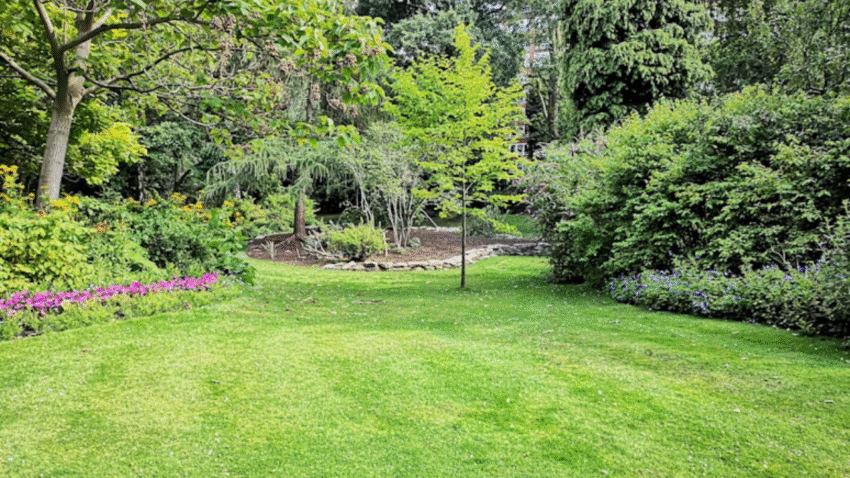Introduction
Think you can’t have a lush, beautiful garden just because your yard has lots of shade? Learning how to garden in shady areas helps you transform dim corners into thriving green spaces full of texture, color, and interest. With the right plant choices, soil prep, and design tricks, you can make even the shadiest parts of your yard come alive.
Why Gardening in Shade Matters
Shade gardening opens up new possibilities — instead of fighting the shade, you can embrace it! Trees, fences, and buildings create pockets of low light that many plants actually love. Shade gardens can be cooler, more peaceful, and lower-maintenance than sunny beds. Plus, they’re perfect for creating woodland nooks, lush borders, or relaxing sitting spots sheltered from harsh sun.
Step-by-Step Guide to Gardening in Shady Areas
1. Understand Your Shade
Not all shade is the same! First, figure out what kind of shade you have:
- Light shade: Bright but no direct sun; maybe dappled light through tree canopies.
- Partial shade: 3–6 hours of direct morning or late afternoon sun.
- Full shade: Less than 3 hours of direct sun daily, often under dense trees or on the north side of buildings.
Observe your space throughout the day and season to see how light shifts.
2. Improve the Soil
Trees often compete with shade plants for nutrients and moisture. Help your garden thrive by improving the soil:
- Add plenty of compost or well-rotted leaf mold to enrich soil and boost drainage.
- Keep the soil loose and crumbly so delicate roots can spread.
- Mulch to conserve moisture and reduce weed competition.
Garden tip: Be gentle around tree roots — don’t dig deeply, and avoid damaging big surface roots.
3. Choose the Right Shade-Loving Plants
Picking the right plants is the secret to success. Many perennials, ground covers, ferns, and shrubs love low light. Here are some favorites:
Perennials:
- Hostas (great for lush foliage)
- Astilbes (plumes of colorful flowers)
- Bleeding heart
- Columbine
- Brunnera (heart-shaped leaves, blue flowers)
Ferns:
- Lady fern
- Japanese painted fern
- Christmas fern
Ground Covers:
- Pachysandra
- Sweet woodruff
- Ajuga (bugleweed)
- Lamium (deadnettle)
Shrubs:
- Hydrangeas (especially for dappled shade)
- Azaleas and rhododendrons
- Boxwood
- Mahonia
✅ Native plants: Check what native woodland plants grow in your area — they’re naturally suited for your conditions and support local wildlife.
4. Plant with Layers for Visual Interest
Shade gardens can look flat if they lack structure. Create a woodland feel by layering:
- Tall shrubs or small trees as the canopy.
- Medium-height perennials or grasses for the understory.
- Low ground covers to carpet the soil.
Mix leaf shapes, colors, and textures — big hosta leaves, feathery ferns, and small variegated ground covers make your garden pop.
5. Add Pops of Color and Light
Shady spots can look dark if you don’t plan carefully. Brighten them up by:
- Using plants with variegated or golden leaves to reflect light.
- Adding white or pastel flowers — they stand out in low light.
- Placing garden ornaments, mirrors, or light-colored stones to bounce light around.
Garden tip: Paint nearby fences or walls a light color to help brighten the area.
6. Water and Mulch Properly
Dry shade is a common challenge — trees and shrubs drink up a lot of water.
- Water deeply and consistently, especially during dry spells.
- Mulch with shredded leaves, pine needles, or compost to keep soil moist.
- Choose drought-tolerant shade plants if watering is hard.
7. Create Paths and Features
Turn your shady corner into an inviting retreat:
- Add a simple stone or gravel path winding through your shade garden.
- Place a bench or small bistro set for relaxing under the trees.
- Tuck in birdbaths, fairy houses, or woodland statues to add charm.
Paths and focal points draw the eye through the shade and make your garden feel intentional.
8. Keep It Neat and Tidy
Fallen leaves and debris can build up in shady areas. Keep your garden looking its best by:
- Raking leaves in fall and spring to avoid smothering plants.
- Dividing perennials like hostas every few years to prevent overcrowding.
- Pruning back overhanging branches if you want to adjust light levels.
Common Mistakes to Avoid
Mistake 1: Choosing Sun-Loving Plants
Solution: Stick with plants that thrive in your level of shade — they’ll be healthier and lower-maintenance.
Mistake 2: Ignoring Tree Roots
Solution: Avoid deep digging around trees. Plant shallow-rooted species instead.
Mistake 3: Underwatering
Solution: Don’t assume shade means moist soil. Trees compete for water — check soil regularly.
Mistake 4: Letting It Get Too Dark
Solution: Prune lightly or thin tree canopies if needed to let in dappled light.
Mistake 5: Skipping Mulch
Solution: Mulch keeps the soil moist, adds nutrients, and suppresses weeds.
Extra Tips & Garden Hacks
✅ Use Containers: Brighten shady patios or decks with pots of shade-loving plants like ferns and coleus. You can move them around to refresh the space.
✅ Try Moss: In deep shade where grass won’t grow, moss makes a beautiful, low-maintenance ground cover.
✅ Highlight Foliage: Shade gardens are about leaves as much as flowers — choose plants with interesting shapes, colors, or variegation.
👉 Want to attract more wildlife to your shade garden? Check out our guide on how to plant a pollinator-friendly garden — many woodland natives support bees and butterflies, even in shade.
Conclusion
Learning how to garden in shady areas lets you celebrate the cooler, quieter corners of your yard instead of fighting them. With the right plants, good soil prep, thoughtful layering, and creative touches, you can turn any patch of shade into a peaceful, lush hideaway. Keep this guide handy as you plan and plant — and watch your shady spots come alive with color, texture, and life. Bookmark it and enjoy your shade garden season after season!
